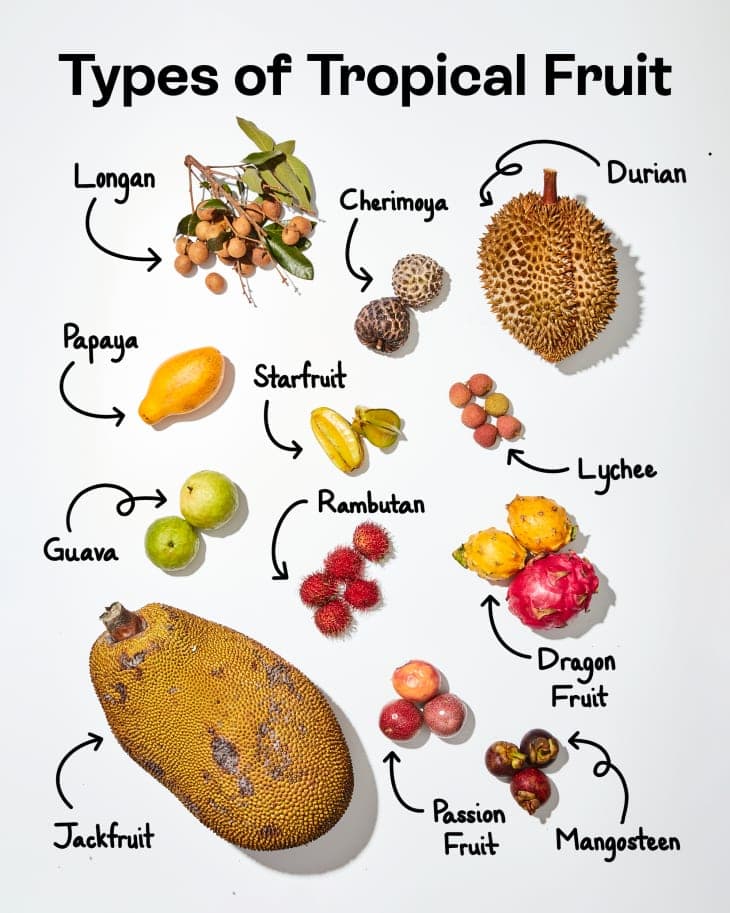? Embark on a Tropical Fruit Adventure with Your Kids! ?
Welcome, lovely parents, to the sunny side of snacking! If you’re looking to sprinkle a little pizzazz into your family’s fruit bowl and educate your kiddos on the vibrant variety of nature’s sweets, you’ve landed in the perfect spot. Embark with us on a fabulous fruity journey as we explore tropical fruits that are not only bursting with flavors but also packed with tremendous health benefits and fun facts that will amaze your youngsters!
? Why Tropical Fruits are a Treasure Trove of Goodness
We all want what’s best for our little munchkins, and that includes ensuring they’re getting a rainbow of nutrients in their diet. Tropical fruits, with their exotic flair, are not a mere luxury for the taste buds; they are a powerhouse of vitamins, minerals, and antioxidants that promote your child’s well-being. From boosting the immune system to improving digestion, these dazzling delights do it all!
? Tip: Make Nutrition Fun!
Here’s the secret – kids love fun facts, and tropical fruits come with plenty of those. Did you know that pineapples have enzymes that can tenderize meat? Or that bananas are technically berries? Share these nuggets of knowledge while they munch, and watch their interest grow!
? Meet the Exotic Delights – A Kaleidoscope of Tropical Fruits
Now it’s time to meet our main cast of characters, the tropical fruits! From the sunny plantations of the subtropics to the lush orchards of equatorial climates, these fruits are the superheroes of the health world, and they’re about to make your kids’ snack time epic!
? Bananas: The Potassium Powerhouses
Starting with the familiar, bananas offer more than just potassium; they’re a quick source of energy and perfect for busy little bees. Serve them sliced on cereal or frozen for an ice-cream-like treat!
? Mangoes: The Sweet Sensation
Mangoes aren’t just sweet and juicy; they’re crammed with vitamins A and C, and their fiber content is a friend to tummies everywhere. Craft them into smoothies or make mango popsicles for a tropical twist on a hot day.
? Pineapples: The Digestive Aid
These spikey wonders are not only a hit on the taste buds but also come with bromelain, an enzyme aiding digestion. Plus, they’re fun to eat! Ever tried grilling pineapple for a smoky-sweet treat? Yum!
? The Sunshine Vitamin and More – Health Benefits Unpeeled
When you hear “tropical fruits”, think of a sun-drenched orchard of health benefits. These fruits are excellent sources of Vitamin C, essential for fighting those pesky colds. But that’s not all; they also contain a host of other vitamins and minerals, from Vitamin A, crucial for eye health, to magnesium, which can help with muscle function. And let’s not forget fiber, which is essential for a healthy digestive system.
Lacing these nutrient-dense foods into your kiddo’s diet is easier than you’d think. Let’s take a look at some practical ways to make tropical fruits a regular, exciting guest at your family’s table!
Stay tuned as we dive deeper into each fruit, unraveling their mystery and presenting you more delightful ways to welcome these treats into your children’s hearts and plates! Search high and low in your grocery store, or better yet, take a family field trip to a local farmers market or specialty store to source fresh, delicious tropical fruits. The adventure has just begun, and we promise it’s going to be utterly fruitful!

5 Things Parents Should Know When Preparing Tropical Fruits for Kids
1. Safety First: Preparing Fruits Properly
When introducing tropical fruits to your children, it’s important to prepare them safely. Always wash fruits thoroughly to remove any pesticides or bacteria. If the fruit has a tough skin, like mangoes, make sure to peel it off as it can be difficult for little ones to digest. For fruits with large seeds or pits, such as papayas and avocados, be sure to remove them to prevent choking hazards.
2. Allergies and Sensitivities: What to Watch For
Keep in mind that some tropical fruits may cause allergies or sensitivities. Introduce new fruits one at a time and keep an eye out for any adverse reactions, such as itching, rash, or digestive distress. If your child has a latex allergy, be cautious with fruits like kiwis, bananas, and avocados, which can trigger symptoms in sensitive individuals.
3. Ripeness and Flavor: Best Practices
The sweetness and flavor of tropical fruits largely depend on their ripeness. Make sure to choose fruits that are at their peak ripeness for the best taste and texture experience. Ripe fruits are also easier to digest and are packed with nutrients. Fruits like pineapples and mangoes should give a little under pressure and have a fragrant aroma. Color can also be an indicator of ripeness, but this varies greatly across different types of fruits.
4. Storage and Shelf Life: Keeping Fruits Fresh
Storing tropical fruits correctly is key to maintaining their freshness and nutritional value. Some fruits like bananas and pineapples ripen at room temperature, while others like mangoes, papayas, and avocados can ripen on the counter and then be moved to the refrigerator to slow further ripening. Certain fruits, especially berries and grapes, should be refrigerated right away and kept in a breathable container to prevent mold growth.
5. Encouraging Exploration: Introduce a Variety of Fruits
Introducing a wide range of tropical fruits can help expand your child’s palate and provide a diverse array of nutrients. Start with small servings of exotic fruits like lychees, rambutans, or starfruits to allow your child to become accustomed to new textures and flavors. Encourage them to describe what they taste and ask them which ones they like best. This can be a fun tasting game that can help create excitement and open-mindedness towards trying new foods.
? Creative Ways to Serve Tropical Fruits to Kids
With so many vibrant and delicious tropical fruits to choose from, there’s no shortage of ways to add them to your child’s diet. Here are some fun and creative ideas:
- Create a colorful tropical fruit salad with a variety of chopped fruits. Drizzle with a touch of honey or coconut milk for added sweetness.
- Make fun fruit skewers by threading bite-sized pieces of tropical fruits onto bamboo sticks. Serve them with a yogurt dip or chocolate sauce for a delightful snack.
- Blend tropical fruits into smoothies or use them as toppings for yogurt or oatmeal. You can also freeze blended fruit mixtures into popsicles for a cool treat.
- Bake tropical fruits into muffins, bread, or pancakes for a naturally sweet flavor. Pureed or finely chopped fruits like bananas or mangoes make great additions to baked goods.
- Encourage your kids to help make a ‘fruit pizza’ with a large, sliced round fruit like watermelon as the base, and an assortment of tropical fruit toppings.
Remember, the goal is to make eating fruits an enjoyable and stress-free experience. By involving your kids in the preparation process and being creative with servings, you’ll instill healthy eating habits and a love for nature’s candy from around the world!
? Educational Fun: Learning Through Tropical Fruits
Combining education with eating can make a powerful impression on young minds. Use the diversity of tropical fruits to teach about different countries and climates, exploring where each fruit originates. You can even gather fun trivia about how these fruits grow, their history, and their use in various cultural cuisines. A scavenger hunt through the grocery aisles or at the farmers’ market to find all the ingredients for a tropical fruit salad can also be both educational and exciting for kids.
As you immerse your family in the delicious and nutritious world of tropical fruits, remember that each new taste is an adventure. With your encouragement and these tips, your kids will be well on their way to becoming junior fruit enthusiasts with a zest for healthy living!
For more great fun click here. For more information see here
Disclaimer
The articles available via our website provide general information only and we strongly urge readers to exercise caution and conduct their own thorough research and fact-checking. The information presented should not be taken as absolute truth, and, to the maximum extent permitted by law, we will not be held liable for any inaccuracies or errors in the content. It is essential for individuals to independently verify and validate the information before making any decisions or taking any actions based on the articles.




